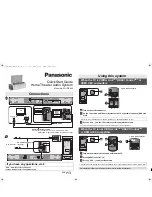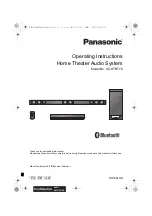
21
The cabinet
The design of the cabinet plays a very important role in
the overall performance of the loudspeaker system, as it
determines the parameters of
freedom from resonance,
cabinet sound, bass reproduction, imaging properties
and
radiation characteristics
in the mid-range and treble
areas.
The cabinets of the
TCI
series are amongst the most
complex available on the market. The sides, back pan-
els, baffles and front covers are manufactured using
moulded laminated wood, while the internal sound ducts
are made of high-strength MDF board.
Laminated wood is the ideal constructional material for
loudspeaker cabinets. The moulded timber panels are
produced in one of Europe’s most modern factories, and
consist of 9 to 11 layers of beech veneer around 2 mm
thick, laminated in a cross-grain pattern, and bonded
under pressure, heat and micro-wave energy in three-
dimensional moulds.
Without this technology the modelled, flowing side pan-
els of the
TCI
loudspeakers would be impossible to build.
The pressed components are processed using the latest
5-axis machines for absolute accuracy and repeatable
precision.
The side panels, the curved back panel, the baffle, and
the cambered front cover are designed to exclude com-
pletely the possibility of resonance, standing waves and
cabinet sound. The shape of the cabinet combined with
the exceptionally stiff material with its extreme bending
strength effectively eliminates these problems, which
have always been the Achilles’ heel of cabinet design.
The complex internal sound ducts provide further stiff-
ening of the cabinet.
The result in the listening room is that the speakers’ bass
reproduction is absolutely clean, clear and precise even
at very high levels.
The cabinets taper towards the rear, and the moulded
wood technology provides the internal space for long,
folded transmission lines, whose sound ducts further
stiffen the whole cabinet; these features provide an ex-
tremely low bottom limit frequency.
The speakers feature very narrow baffles which ensure
optimum radiation characteristics and phase qualities at
all frequencies.
The transition area between the mid-range driver and the
treble unit is smoothly modelled and recessed towards
the tweeter, with the aim of achieving perfect radiation
characteristics in this critical transitional area, and of
optimising the group delay of the mid-range and treble
units. That is why the baffle is as narrow as possible
where the treble unit is located.
All manuals and user guides at all-guides.com
all-guides.com
















































